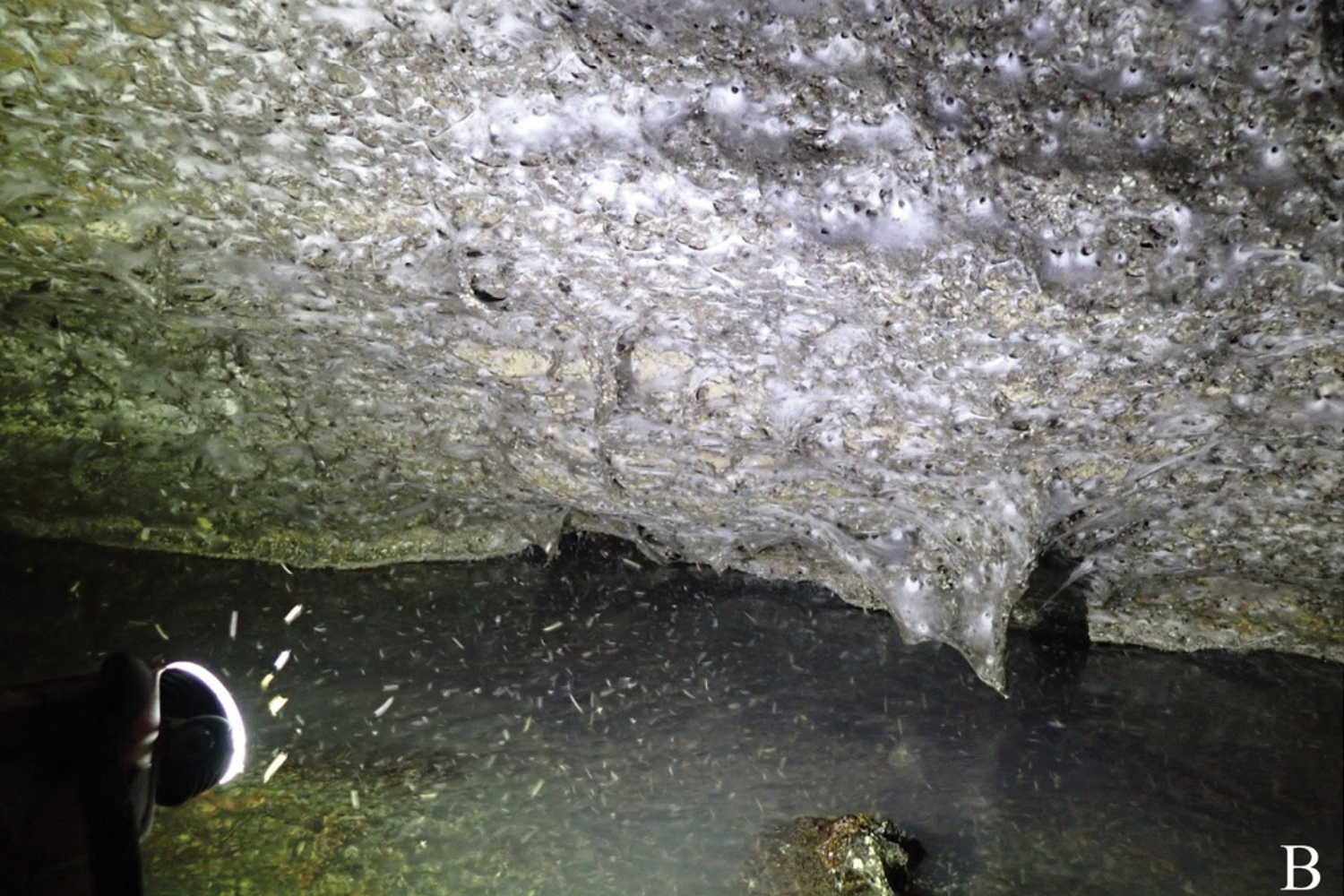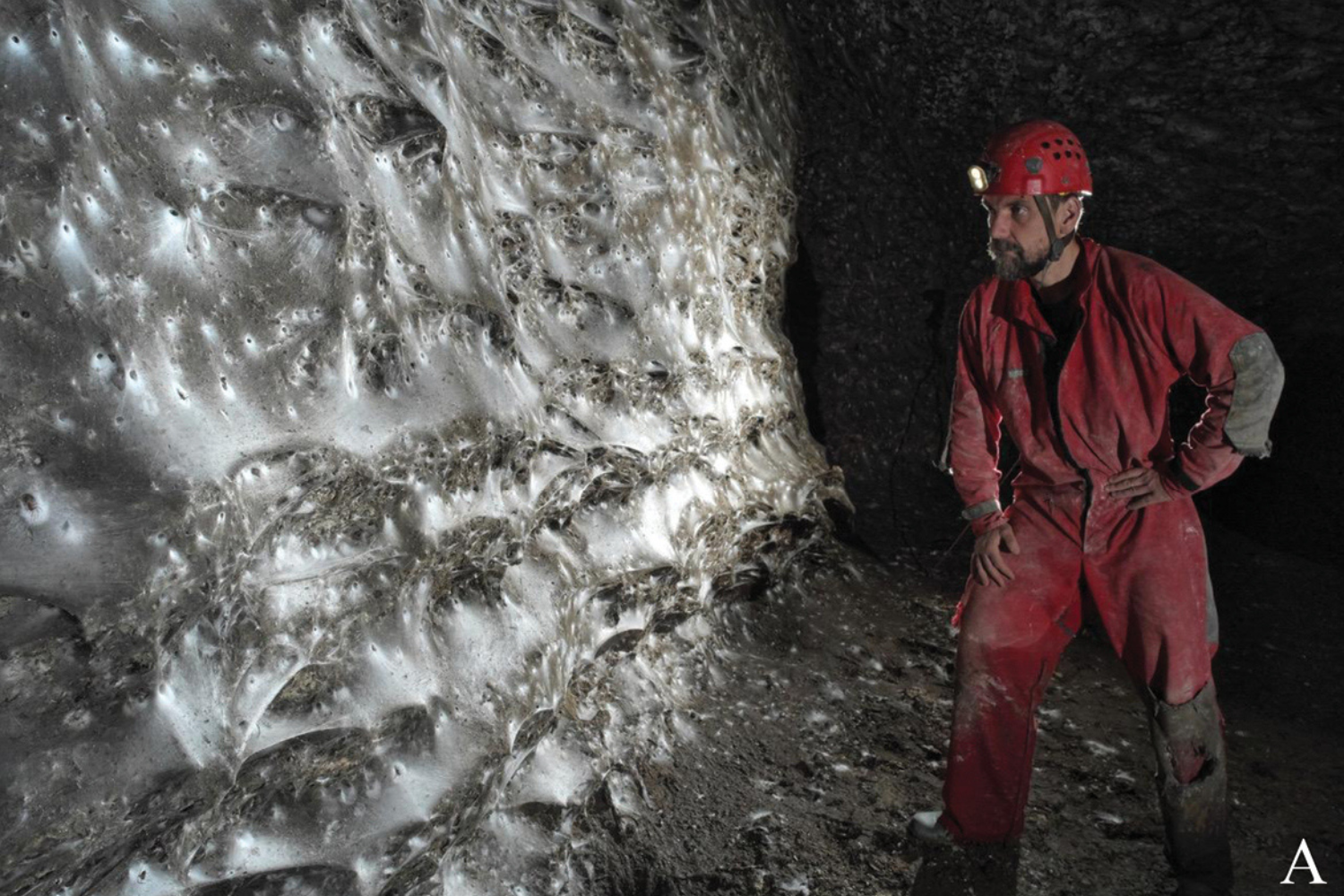Arachnophobes look away now. Deep inside a pitch-black cave straddling the Albanian-Greek border, researchers have uncovered what may be the largest spider web ever recorded—teeming with more than 111,000 spiders.
The web, described in the journal Subterranean Biology on October 17, stretches across 1,140 square feet of the cave’s wall.
It is not a single sheet of silk, but a vast patchwork of thousands of interconnected, funnel-shaped webs—a rare case of cooperation among spiders that are usually solitary.
A Hidden Spider World
The web was discovered inside Sulfur Cave, a cavern sculpted over time by sulfuric acid formed from the oxidation of hydrogen sulfide in groundwater. The eerie, low-ceilinged passage where the web thrives is a permanently dark, sulfur-rich environment—a place where only the hardiest organisms can survive.
Although the discovery has only now been formally studied, cavers from the Czech Speleological Society first stumbled upon the phenomenon in 2022 during an expedition in Vromoner Canyon.

Analysis of the web revealed two species at the heart of the creepy collaboration: Tegenaria domestica, commonly known as the barn funnel weaver or domestic house spider; and Prinerigone vagans, another funnel-web builder.
DNA testing confirmed both species dominate the colony in the cave, and, together, the two form a bustling arachnid world.
Such large-scale cooperation is virtually unheard of among these spiders, which normally live alone. The researchers say this discovery could reshape our understanding of spider behavior, especially in extreme environments.
 A Toxic Ecosystem
A Toxic Ecosystem
The spiders’ survival depends on a delicate underground ecosystem. They prey on nonbiting midges, which themselves feed on white microbial biofilms—slimy coatings formed by sulfur-oxidizing bacteria lining the cave walls.
The sulfur-rich stream, fed by natural springs and winds through the cavern, releases hydrogen sulfide that sustains this unexpected chain of life. From bacteria to midges to spiders, the entire system depends on chemical reactions that most living things would find lethal.
For arachnophobes, the thought of 111,000 spiders working together in total darkness may sound like something out of a horror movie. But, for scientists, it is a window into how life can adapt, and even thrive, in one of the planet’s most-inhospitable environments.
Reference
István Urák, Blerina Vrenozi, Głąbiak, Z., Ninon Lecoquierre, Eiberger, C., Maraun, M., Andrei Ştefan, Flot, J.-F., Brad, T., Dainelli, L., Sarbu, S. M., & Băncilă, R. I. (2025). An extraordinary colonial spider community in Sulfur Cave (Albania/Greece) sustained by chemoautotrophy. Subterranean Biology, 53, 155—177. https://doi.org/10.3897/subtbiol.53.162344.

